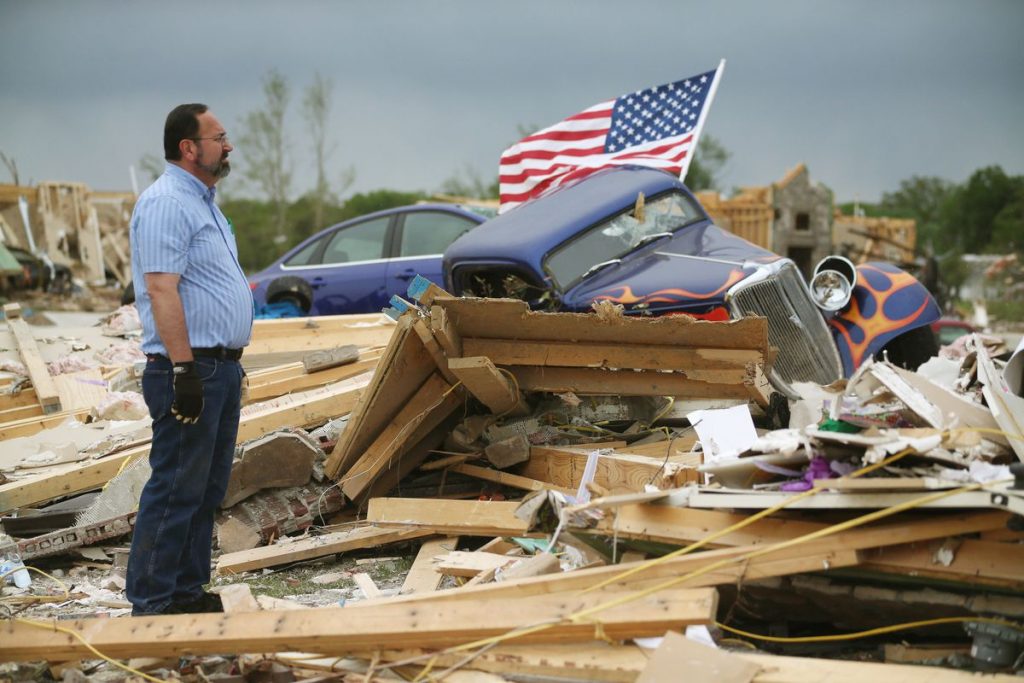An emphasis on tornado preparedness can be linked to saving countless lives and reducing injuries, and more and more people than ever are emerging from disasters relatively-unscathed. However, it’s just as important to be prepared for what to do in the aftermath of a tornado strike as well. Let’s look at a few examples of challenges that we can face in this type of situation that illustrates why we need to have some kind of post-disaster plan in place.
Disorientation
The immediate aftermath of a direct hit usually involves changes to the landscape around us. Homes get destroyed and landmarks are wiped out, and it’s easy to become lost in our own neighborhoods as we take in our surroundings following a tornado. The contrast between before and after can unnerve even the strongest among us and make it a challenge to begin to assess the extent of the devastation.
This not only creates psychological stress, but it can also make it difficult to orient ourselves. Getting out of the area, getting help, or even finding a shelter can be a lot harder than we think, and this can impact our ability to find our way to essential services or safety. It can also make it challenging for first-responders and aid workers to get on-scene as well. Make sure that you are ready to navigate to whatever safe-zone you have identified in your planning so that you won’t get turned around as you venture out after the dust settles.
Protect Yourself
Once you’ve taken a moment to orient yourself, the next step is to ensure that you are not taking unnecessary risks as you start to move about. Take in your surroundings, assess the extent of damage, chart a roadmap for getting from point A to B as you dodge obstacles, and be mindful of hazards. Common hazards include downed power lines, broken water mains and gas leaks. These are in addition to the variety of debris that we will have to tackle along the way. Debris piles may be unstable, fragments of glass, nails, wood, siding and other material may be in places that we least expect to find them. Debris can travel for great distances as well, so it’s important to be mindful of your surroundings even as you move away from ground zero. The last thing that any one of us needs is to become injured, or worse, in the aftermath of a storm that we managed to survive.
Help Others
Be prepared to offer assistance in rescue efforts, at least until appropriate personnel reach the scene and get to work. However, you shouldn’t rush to someone’s aid until you’ve established that it’s safe for you to do so. If you become injured or killed during a rescue attempt, you become a victim that will drain resources, and the person who you are trying to help may find themselves in more dire straights as well.
Stay Informed
There’s a good chance that phone networks and Internet service will either be down, damaged or overloaded following a tornado. This is where a good weather radio comes in handy, and officials will often use them to relay information to victims in the area. Being able to access this information is invaluable as it will help you, and those you help, to avoid aimlessly wandering to find services that won’t be there when you arrive. If you don’t have access to communication, look for first-responders and ask them for information.
Reach Out
In most cases, you should wait until you’ve ensured your safety and assessed the situation before reaching out to family and friends to let them know that you’re okay. This will help to keep information reliable, communication succinct, and prevent a lot of miscommunication along the way.
If you’re worried about someone who is missing, inform first-responders and check meeting sites, hospitals or field clinics to see if they’re there before setting out to find them. This will rule-out any dead-ends that you or rescuers may encounter in an unnecessary search. Remember that time is not on the side of missing victims, and resources for rescue may be minimal at best. Taking these two steps will go a long way with helping to locate people as efficiently as possible.
Be Prepared for Chaos
Expect that there will be a lot of confusion and uncertainty in the days that lie ahead. This usually lasts for a day or two until recovery managers can create a system of order and organize resources. A good bug-out bag, survival kit and plan will go a long way to help you to ride out the chaotic aftermath that you’re likely to encounter following a devastating tornado.
These tips are not intended to be hard-and-fast rules that will work in every situation, but they serve as a good frame of reference in which to create your own strategy. The important thing to remember as the aftermath of a tornado may be where the biggest threats to our safety and survival may lie, and we need to be just as prepared for this as we are for the tornado itself.
